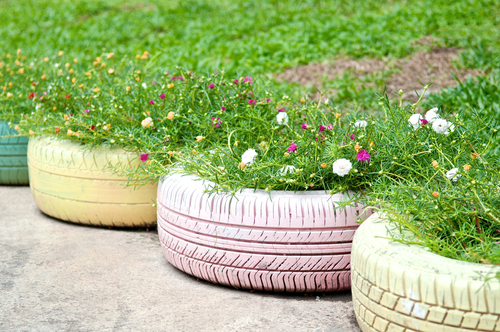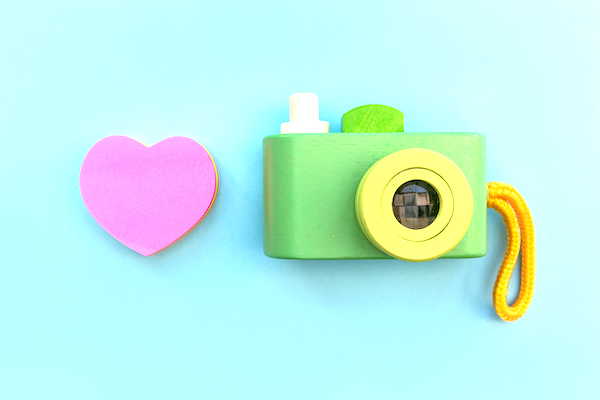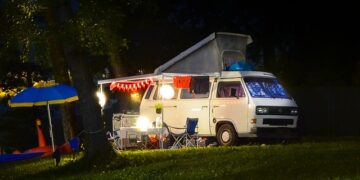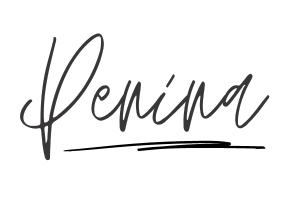Whether you’re one of the 80,000 Kiwis who moved to Australia over the past few years, an Aussie managing property across the Tasman, or simply curious about water costs on both sides of the ditch – understanding water expenses is crucial for household budgeting.
Water bills can be one of the most unpredictable household expenses, varying dramatically based on location, supply type, and usage patterns. This comprehensive guide compares water costs between Australia and New Zealand, provides money-saving strategies for both countries, and offers practical advice for managing water expenses wherever you call home.
The Great Trans-Tasman Migration and Water Reality Check
2025 has seen a record 80,000 New Zealanders relocate to Australia, according to Stats NZ. Many discover that water costs – and water supply systems – work quite differently across the Tasman.
Key Differences:
- Australia: Predominantly town water supply with metered usage
- New Zealand: Mix of town supply and widespread tank water reliance
- Cost structures: Dramatically different pricing models
- Climate: Water scarcity more acute in many Australian regions
- Regulations: Different water restrictions and compliance requirements
For expats and property owners on both sides, understanding these differences can mean savings of $500-2,000+ annually.
Water Supply Systems: Australia vs New Zealand
Australia’s Water Infrastructure
Town Water Supply:
- Nearly universal in cities and towns
- Metered usage billing
- State-managed water authorities
- Strict water restrictions during droughts
- Tiered pricing (more you use = higher per-litre cost)
Average Australian Household Water Costs:
- Sydney: $1,000 – $1,500/year
- Melbourne: $800 – $1,200/year
- Brisbane: $900 – $1,400/year
- Perth: $700 – $1,100/year
- Adelaide: $800 – $1,300/year
Typical Billing Structure:
- Fixed service charge: $100-300/quarter
- Usage charges: $2.00-$4.00 per kilolitre (1,000L)
- Tiered pricing: Increases with higher consumption
- Sewerage charges: Additional $200-400/quarter
New Zealand’s Mixed Water System
Urban Areas (Town Supply):
- Most cities provide council water
- Often unmetered (fixed annual charge)
- Transitioning to metered supply in some areas
- Generally lower per-litre costs than Australia
Rural Areas (Tank Water):
- Approximately 60% of rural properties use tank water
- Rainwater collection primary source
- Bulk water delivery for top-ups
- Complete supply independence
Average NZ Household Water Costs:
Urban (Council Supply):
- Auckland: $400 – $800/year (metered)
- Wellington: $300 – $600/year (mostly unmetered)
- Christchurch: $200 – $500/year
- Whangarei: $250 – $500/year (limited town supply)
Rural (Tank Water):
- Rainwater collection: $0 (after infrastructure investment)
- Bulk water delivery: $2,500 – $5,000/year (depending on usage)
- Tank maintenance: $300 – $500/year
Cost Comparison: Real Numbers
Scenario 1: Family of 4 in Urban Area
Australia (Sydney Example):
- Water usage: 200kL/year (800L/day)
- Service charges: $250/quarter × 4 = $1,000
- Usage charges: 200kL × $2.35/kL = $470
- Sewerage: $300/quarter × 4 = $1,200
- Total: $2,670/year
New Zealand (Auckland Example):
- Water usage: 200kL/year (800L/day)
- Fixed annual charge: $600
- Usage charges (metered): 200kL × $1.80/kL = $360
- Wastewater: Included in rates
- Total: $960/year
Annual Saving in NZ: $1,710
Scenario 2: Rural Property Owner
Australia (Regional NSW):
- Tank water: Initial setup $8,000-15,000
- Rainwater primary source: $0
- Occasional water delivery: $200-500/year
- Tank maintenance: $200/year
- Annual cost: $400-700
New Zealand (Northland Example):
- Tank water: Initial setup $6,000-12,000
- Rainwater primary source: $0
- Regular water delivery needed: $2,800-4,800/year
- Tank maintenance: $300/year
- Annual cost: $3,100-5,100
Annual Saving in AU: $2,700-4,400
Why the difference? Australia’s higher rainfall in many rural regions + larger roof catchments + better rainwater harvesting infrastructure.
Scenario 3: Expat Property Management
Many Kiwis in Australia still own properties back home, particularly rural lifestyle blocks or holiday homes. Managing water remotely adds unique challenges.
Managing NZ Rural Property from Australia:
If you own a Northland lifestyle block or holiday home while living in Australia, you’ll need reliable water delivery services. Established providers like Water Delivery Whangarei and Water Delivery Northland offer services specifically for expat property owners, including:
- Remote booking and payment
- Property manager coordination
- Scheduled deliveries without owner present
- Emergency response availability
For properties in the Whangarei region specifically, Gracies Cartage has extensive experience working with overseas property owners to maintain reliable water supply.
Annual Costs for Expat-Owned NZ Property:
- Regular monitoring service: $500-800
- Water deliveries (8-12 per year): $2,500-4,200
- Property management: $1,200-2,000
- Total: $4,200-7,000/year
Money-Saving Tips:
- Larger tank capacity reduces delivery frequency
- Seasonal fills (winter/autumn) cost less
- Establish contract with local provider
- Remote tank monitoring systems
- Neighbors can check levels for small fee
Water Cost Factors in Both Countries
Australia-Specific Cost Factors
1. Tiered Pricing Structure: The more water you use, the higher the per-litre rate climbs.
Sydney Water Tiers Example:
- 0-50 kL/quarter: $2.35/kL
- 51-75 kL/quarter: $2.93/kL
- 75+ kL/quarter: $3.77/kL
Impact: Heavy users pay 60% more per litre than conservative users.
2. Drought Restrictions: During water restrictions:
- Level 1: Moderate restrictions (hand-held hose only)
- Level 2: Stricter limits (watering times)
- Level 3: Severe restrictions (gardens only 2 days/week)
- Level 4: Critical (no outdoor watering)
Fines for Non-Compliance: $220-$550 per offence
3. Climate Variations:
- Northern Australia: Wet season/dry season extremes
- Southern Australia: Mediterranean climate, dry summers
- Eastern coast: More reliable rainfall
- Perth/Adelaide: Significant water scarcity issues
4. Desalination Costs: Cities using desalinated water (Perth, Adelaide, Sydney) have higher costs due to energy-intensive processing.
New Zealand-Specific Cost Factors
1. Rainfall Reliability: New Zealand’s smaller land mass and maritime climate means:
- More consistent rainfall year-round
- Regional variations (West Coast vs Central Otago)
- Tank water more viable in most regions
- Less drought severity than Australia
2. Water Delivery Markets: Rural NZ has established water delivery infrastructure:
- Competitive pricing in populated areas
- Higher costs in remote locations
- Seasonal pricing variations
- Distance-based delivery charges
3. Regulatory Changes: The Water Services Act 2021 introduced:
- Stricter water quality standards
- Registered water carrier requirements
- Improved safety compliance
- May affect delivery costs long-term
4. Property Location: Distance dramatically affects rural water costs:
- Central locations: $250-350 per 10,000L
- 20km+ from town: $350-500 per 10,000L
- Remote coastal: $500-700 per 10,000L
Money-Saving Strategies: Australia
1. Install Water-Efficient Fixtures
Investment: $500-1,500 Annual Savings: $200-400
Key Upgrades:
- Low-flow showerheads (6L/min vs 15L/min)
- Dual-flush toilets (3L/6L vs 11L)
- Water-efficient washing machines (AAA rating)
- Tap aerators ($5 each, huge impact)
Payback Period: 2-4 years
2. Rainwater Tank Investment
Investment: $2,500-6,000 (installed) Annual Savings: $300-800 Payback Period: 4-10 years
Government Rebates Available:
- NSW: Up to $1,500 rebate
- Victoria: Various council rebates ($500-1,000)
- Queensland: $300-1,000 depending on council
- South Australia: Up to $1,000
- Western Australia: Up to $700
Best Uses for Rainwater:
- Toilet flushing (30% of household use)
- Garden watering (20% of summer use)
- Laundry (15% of household use)
- Car washing
ROI Calculation:
- 5,000L tank saving 100kL/year × $2.50/kL = $250/year
- Government rebate: $1,000
- Net cost after rebate: $2,000
- Payback: 8 years
3. Greywater Systems
Investment: $1,000-3,000 (basic system) Annual Savings: $150-300
What is Greywater? Reusing water from:
- Showers and baths
- Washing machines
- Bathroom sinks
Uses:
- Garden irrigation
- Lawn watering
- Toilet flushing (advanced systems)
Regulations: Check state/council requirements before installation.
4. Smart Irrigation
Investment: $300-1,200 Annual Savings: $200-500
Technologies:
- Soil moisture sensors
- Weather-based controllers
- Drip irrigation vs sprinklers
- Timed watering (early morning/evening)
Garden Water Usage:
- Traditional sprinklers: 1,000L+ per hour
- Smart drip irrigation: 200-300L per hour
- Reduction: 70%+
5. Behavioral Changes (Free!)
Simple habits saving $100-300/year:
Bathroom:
- 5-minute showers (saves 5,000L/year per person)
- Turn off tap while brushing teeth (saves 10L/day)
- Fix dripping taps (saves 20,000L/year)
Kitchen:
- Full dishwasher loads only
- Rinse vegetables in bowl, not running water
- Keep drinking water in fridge (no tap running for cold water)
Laundry:
- Full loads only
- Cold water washing (saves energy too)
- Front-loader vs top-loader (50% less water)
Outdoor:
- Sweep paths instead of hosing
- Car wash: bucket vs running hose
- Mulch gardens to retain moisture
Money-Saving Strategies: New Zealand
1. Optimize Rainwater Collection
Investment: $2,000-5,000 Annual Savings: $1,500-3,000 (reduced deliveries)
Improvements:
- Connect all available roof areas
- Increase gutter and downpipe capacity
- Install first flush systems
- Larger storage capacity
Calculations:
- 150 sqm roof in Whangarei (1,500mm rain)
- Potential collection: 225,000L/year
- After losses (20%): 180,000L actual
- Reduces deliveries: 10-15 fewer loads
- Savings: $2,500-5,250/year
2. Larger Tank Capacity
Investment: $3,000-8,000 (additional 20,000-50,000L) Annual Savings: $500-1,500
Benefits:
- Fewer deliveries needed
- Better value per delivery (bulk discount)
- Emergency buffer
- Catch more seasonal rainfall
ROI Example:
- Add 30,000L capacity ($4,500 installed)
- Reduce deliveries from 15 to 10 per year
- Savings: 5 deliveries × $300 = $1,500/year
- Payback: 3 years
3. Contract Water Delivery Pricing
Annual Savings: $1,000-2,500
How It Works:
- Commit to minimum annual volume
- Pre-negotiated per-load pricing
- Priority scheduling
- Account payment terms
Example:
- Regular rate: $350 per 10,000L
- Contract rate: $300 per 10,000L
- 20 deliveries/year savings: $1,000
Many NZ water delivery services, including Gracies Cartage in the Whangarei region, offer contract pricing for regular customers.
4. Seasonal Strategic Filling
Annual Savings: $400-800
Strategy:
- Fill tanks in autumn/winter (lower demand)
- Avoid summer premium pricing
- Pre-book before peak season
Pricing Variations:
- Winter: $280-320 per load
- Summer: $350-450 per load
- Difference: 15-30% premium in peak season
5. Usage Monitoring and Conservation
Investment: $300-800 (monitoring system) Annual Savings: $500-1,000
Tank Monitoring Benefits:
- Never run completely empty (avoid emergency premiums)
- Optimize delivery timing
- Identify leak problems quickly
- Track actual usage patterns
Conservation for Tank Water Users:
- Every litre saved = delivery delayed
- Target 400L/day for family of 4 (vs 600L average)
- Savings: Reduce deliveries from 15 to 10 per year
- Annual savings: $1,500
Special Consideration: Managing Water Costs for Expats and Dual Property Owners
Kiwis in Australia Managing NZ Property
Challenges:
- Remote monitoring difficult
- Emergency water needs stressful
- Scheduling deliveries from overseas
- Payment coordination
- Property manager costs
Solutions:
1. Automated Monitoring:
- Install remote tank level monitors
- Receive SMS/email alerts at 30% capacity
- Monitor from smartphone in Australia
- Cost: $400-600 installed
2. Establish Reliable Service Relationships: For Northland properties specifically, services like Water Delivery Northland and Water Delivery Whangarei cater to absentee owners with:
- Remote booking systems
- Regular scheduled deliveries
- Property manager coordination
- Account payment from overseas
3. Property Manager Coordination:
- Local property manager checks levels
- Books deliveries as needed
- Emergency contact for issues
- Cost: $50-100 per check/booking
4. Seasonal Pre-Filling:
- Before leaving NZ, fill all tanks completely
- Schedule mid-stay delivery if extended absence
- Arrange neighbor/friend emergency contact
Budget Example:
- 3-month absence
- Pre-fill before leaving: $300
- Mid-stay delivery (scheduled): $300
- Property manager coordination: $150
- Total: $750 for 3-month peace of mind
Australians with NZ Holiday Homes
Common Scenario:
- Bay of Islands bach
- Used 6-8 weeks per year
- Tank water only supply
- May sit empty for months
Cost-Effective Management:
Option 1: Pre-Arrival Filling
- Book delivery 1 week before arrival
- Property manager grants access
- Tank full when you arrive
- Cost: $300-400 per visit
Option 2: Larger Tank + Pre-Fill
- Install 30,000L+ capacity
- Fill completely before leaving
- Should last until next visit
- One delivery per year: $350
Option 3: Property Manager Package
- Includes water monitoring and booking
- Deliveries as needed
- No owner involvement required
- Cost: $800-1,500/year
Providers like Gracies Cartage in Whangarei have systems specifically for holiday home owners and can coordinate with property managers for seamless service.
Environmental Comparison: Water Conservation Efforts
Australia’s Water Crisis History
Australia’s severe droughts have driven aggressive conservation:
Millennium Drought (1997-2009):
- Catalyzed major infrastructure investment
- Desalination plants built
- Permanent water restrictions in some areas
- Changed household water culture
Current Initiatives:
- Water-efficient appliance standards
- Mandatory water efficiency ratings
- Government rebates for water-saving devices
- Public education campaigns
New Zealand’s Water Abundance (With Caution)
NZ’s reliable rainfall has historically meant less focus on conservation, but this is changing:
Emerging Concerns:
- Climate change affecting rainfall patterns
- Summer droughts more frequent
- Urban growth straining supply
- Agricultural demand increasing
Recent Changes:
- Water Services Act 2021 reforms
- Stricter quality standards
- Resource consent tightening
- Growing conservation awareness
Climate Considerations: Future Water Costs
Australia: Long-Term Projections
Climate Change Impacts:
- Reduced rainfall in southern regions
- More severe droughts
- Increased bushfire risk affecting catchments
- Temperature increases = higher demand
Cost Implications:
- Water prices likely to rise 3-5% annually
- More investment in desalination (expensive)
- Stricter permanent restrictions
- Higher penalties for excessive use
Planning Recommendations:
- Invest in rainwater tanks now
- Water-efficient appliances essential
- Greywater systems increasingly valuable
- Budget 5% annual increases
New Zealand: Changing Patterns
Climate Trends:
- West Coast: Increased rainfall
- East Coast: Drier conditions
- Northland: More variable, unpredictable
- Central regions: Longer dry spells
Cost Implications:
- Rural water delivery may increase in cost
- Greater reliance on storage
- Regional variation in pricing
- Possible metering expansion
Planning Recommendations:
- Larger tank capacity critical
- Improved rainwater capture
- Usage monitoring systems
- Budget 3-4% annual increases
Tax and Financial Considerations
Australia: Water Expense Deductions
For Investment Properties:
- Water charges fully deductible
- Includes both service and usage charges
- Tenants may pay usage, you pay service
- Keep detailed records
For Home-Based Businesses:
- Portion of water use deductible
- Calculate business percentage of property
- Requires accurate record-keeping
- ATO requires reasonable substantiation
New Zealand: Different Rules
For Rental Properties:
- Water costs deductible expense
- Tank delivery costs fully deductible
- Tank installation: Capital expense (depreciated)
- Maintenance: Immediate deduction
For Holiday Homes:
- If income-earning, water costs proportionally deductible
- Personal use not deductible
- Keep usage records
Consult Tax Professionals: Rules complex, especially for cross-Tasman property owners.
Technology Solutions for Water Management
Smart Home Water Monitoring
Australian Options:
- Flume: Real-time water usage monitoring ($200-300)
- Waterlily: AI-powered leak detection ($150)
- StreamLabs: Whole-home water monitor ($300)
NZ Tank Monitoring:
- Tank Utility: Remote tank level monitoring ($400)
- Farmbot: Agricultural tank systems ($500-800)
- Custom solutions: $300-600
Benefits:
- Real-time usage data
- Leak detection (saves thousands)
- Usage pattern analysis
- Budget tracking
- Remote monitoring
ROI:
- Typical payback: 1-2 years
- Leak detection alone can save $500-2,000
- Behavioral change savings: $200-400/year
Apps and Digital Tools
Australia:
- Your water authority app (free usage tracking)
- WaterSense calculator (estimate savings)
- State government water apps
New Zealand:
- Council water apps (limited)
- Tank monitoring apps
- Weather-based delivery planning
Real Stories: Water Cost Management Success
Case Study 1: Kiwi Family in Melbourne
Before:
- Water bill: $550/quarter ($2,200/year)
- 4-person household
- Large garden
- No water-saving measures
Changes Made:
- Installed 5,000L rainwater tank ($3,500)
- Low-flow showerheads ($150)
- Greywater to garden ($1,200)
- Behavioral changes (free)
After:
- Water bill: $280/quarter ($1,120/year)
- Savings: $1,080/year
- Payback period: 4.5 years
- 20-year savings: $17,100
Case Study 2: Northland Lifestyle Block Owner
Before:
- 20,000L tank capacity
- 18 deliveries/year @ $350 = $6,300
- Frequent emergency deliveries
- No monitoring system
Changes Made:
- Added 30,000L tank capacity ($4,500)
- Improved roof collection ($1,500)
- Automated monitoring ($400)
- Contract pricing with Gracies Cartage
After:
- 50,000L total capacity
- 10 deliveries/year @ $300 (contract) = $3,000
- Savings: $3,300/year
- Payback period: 2 years
- 10-year savings: $26,500
Case Study 3: Perth Homeowner
Before:
- Water bill: $450/quarter ($1,800/year)
- Bore water not viable (salty)
- Garden dying during restrictions
- High summer usage
Changes Made:
- 10,000L rainwater tank + rebate ($2,800)
- Smart irrigation system ($800)
- Native drought-tolerant plants ($1,000)
- Greywater system ($2,000)
After:
- Water bill: $220/quarter ($880/year)
- Savings: $920/year
- Government rebate: $1,000
- Net cost: $5,600
- Payback period: 6 years
- Garden thriving, even in restrictions
Quick Action Plan: Reduce Your Water Costs Today
If You’re in Australia:
This Week (Free):
- Check for leaks (toilets, taps, hoses)
- Time your showers (aim for 5 minutes)
- Only run full loads (washing, dishes)
- Water garden early morning/evening only
- Review your last 4 water bills
This Month ($0-200):
- Install tap aerators ($5 each)
- Buy a bucket for shower warm-up water
- Fix any dripping taps ($50-100)
- Check garden hose connections ($0-50)
- Apply for water authority audit (often free)
This Quarter ($200-1,000):
- Install low-flow showerheads ($100-200)
- Replace old toilet with dual-flush ($300-600)
- Research rainwater tank rebates ($0)
- Get quotes for water tank installation
- Consider greywater system quotes
This Year ($1,000-6,000):
- Install rainwater tank (with rebate)
- Smart irrigation system
- Water-efficient appliances
- Greywater system
- Native garden conversion
If You’re in New Zealand:
This Week (Free):
- Check tank level
- Calculate daily usage rate
- Book delivery if below 30%
- Fix any leaks
- Check first flush system
This Month ($0-500):
- Get quotes from multiple water carriers
- Research contract pricing options
- Check roof and gutter condition ($0)
- Install basic tank level gauge ($50-150)
- Clean gutters and downpipes ($100-200)
This Quarter ($500-2,000):
- Install remote tank monitoring ($400-800)
- Set up contract delivery service
- Connect additional roof areas ($500-1,000)
- First flush system upgrade ($300-600)
- Schedule tank cleaning ($200-400)
This Year ($3,000-8,000):
- Add tank capacity (20,000-30,000L)
- Comprehensive rainwater system
- Backup pump system
- Property water audit
- Long-term delivery contracts
If You Own Property Across the Ditch:
Immediate Actions:
- Install remote monitoring on NZ property
- Establish relationship with reliable NZ water carrier
- Set up online banking for remote payments
- Create property manager contact list
- Schedule seasonal tank fills
For Northland Properties: Contact local providers like Water Delivery Northland, Water Delivery Whangarei, or Gracies Cartage to discuss:
- Remote property management services
- Scheduled delivery programs
- Emergency contact arrangements
- Payment options for overseas owners
Conclusion: Taking Control of Water Costs
Whether you’re paying metered town supply in Australia, managing tank water in rural New Zealand, or navigating water costs across the Tasman, strategic planning can save you $500-$3,000+ annually.
Key Takeaways:
✓ Australia: Invest in water-efficient fixtures and rainwater tanks for maximum savings ✓ New Zealand: Optimize tank capacity and establish reliable delivery relationships ✓ Both Countries: Behavioral changes are free and can save $200-500/year immediately ✓ Cross-Border Owners: Remote monitoring and local service relationships are essential ✓ Long-Term: Climate change will increase water costs – invest in efficiency now
Start Small, Scale Up: You don’t need to do everything at once. Start with the free and low-cost changes this week, then build toward larger investments over time. Every litre saved is money in your pocket.
Regional Resources:
Australia:
- Your state water authority website
- Government rebate programs
- Local council water services
New Zealand:
- Regional council websites
- Water Services Act compliance info
- Local water delivery services
For Northland-specific water delivery information and services, visit:
Share Your Water Savings Success!
Have you successfully reduced your water bills in Australia or New Zealand? Managing property across the ditch? Share your tips and experiences in the comments below!
Found this guide helpful? Share it with other Kiwis in Australia or Aussies with NZ connections. Together we can all save money on water costs!
Article last updated: October 2025 Written for Australian readers with connections to New Zealand
About SavingsRoom.com.au: Your trusted source for practical money-saving advice, cost comparisons, and financial tips for Australian households.
Related Articles You Might Like:
- Cost of Living Comparison: Australia vs New Zealand 2025
- Property Investment Across the Tasman: What You Need to Know
- Managing Rental Properties from Overseas: Complete Guide
- Top 10 Ways to Cut Household Bills This Year
Disclaimer: Prices and information accurate as of October 2025. Water costs vary by location and provider. Always verify current rates with your local water authority or service provider. This article contains referral links to recommended services.


 YOU
YOU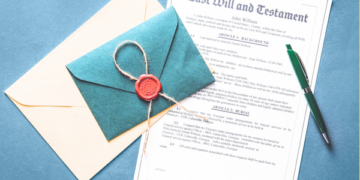





 Money
Money





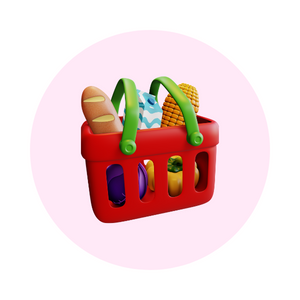 FOOD
FOOD




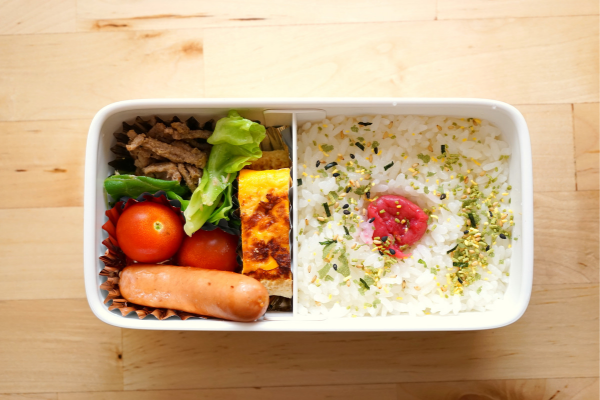
 FAMILY LIFE
FAMILY LIFE




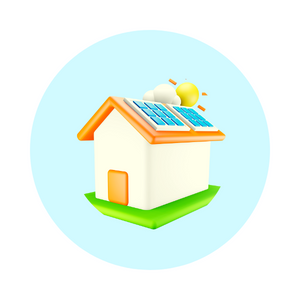 HOME & GARDEN
HOME & GARDEN




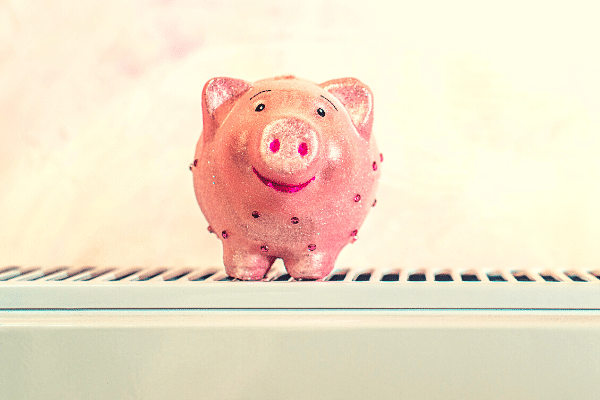


 ORGANISE
ORGANISE

 EVENTS
EVENTS





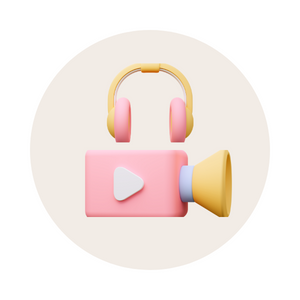 LIFESTYLE
LIFESTYLE

